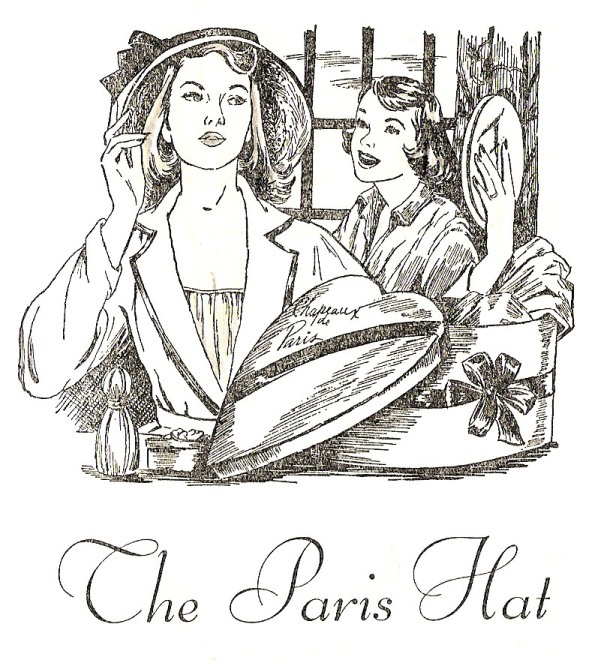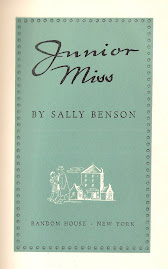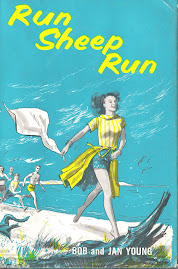Title: A Girl Called Hank
Author: Amelia Elizabeth Walden
Publisher: William Morrow, 1951
Jacket: Not credited
Setting: Basketball-crazy New England
Provenance: Formerly the property of "Sue Greanne, 14A"
Fun: Square dances in the barn; Scottie dogs; buzzer beaters
Quote: "I can never go back now, she thought. I can never go back to this afternoon. Something is happening to me. Something I can't stop or control. I'll never be the same again."
It's not as well known as the Newbery or the Printz, but each year since 2008 the Assembly on Literature for Adolescents (ALAN) has given out the Amelia Elizabeth Walden Award for a YA novel which is "most relevant to adolescents and having enjoyed a wide and appreciative teenage audience” and "possess[es] a positive approach to life, widespread teen appeal, and literary merit." Past winners/honorees include Kristin Cashore, Rick Yancey and Jacqueline Woodson, although I have to admit I haven't heard of this year's winner, Francisco X. Stork's The Last Summer of the Death Warriors. The ALAN cites Walden as a pioneer of writing for teens, starting with the novel Gateway, in 1946. Although Walden wrote for adults as well, and frequently dabbled in the mystery genre, any survey of her teen books will turn up a major motif: sports, and in particular, basketball. Of those, A Girl Called Hank is probably her best known title.
Recently I was looking through some local high school yearbooks from the early 60s. The sports pages were very basic: baseball, football, basketball and track. There were no girls' sports at all. I was well aware that the growth of girls' sports dates to the implementation of Title IX in the 1970s, but I was still taken aback. Perhaps Las Vegas was just too fledgling a community to support more than a couple of sports, because in the world of A Girl Called Hank, set on the East Coast, girls' basketball is HUGE. Brighthaven High School, champions several years running, plays to wildly cheering crowds and the boys' team, if there is one, doesn't even rate a mention.
Hank (Henrietta) Baxter, a tomboy who's grown up playing basketball with four brothers, is the star of the team. Two plots develop: the attentions of Greg, who is on the school newspaper (he's on the college track, the book notes, while Hank, who wants to run her father's lumber company someday, nevertheless doesn't plan on anything beyond secretarial school) and the hiring of a new coach, Miss Dorn, a former tennis star from California. Hank gives Greg short shrift for awhile, but eventually succumbs to the attentions of her mother and sister-in-law and gets dressed up for a date with him. Miss Dorn, who has been hired in spite of the fact she seems to have no experience as a coach, lost her tennis career to a hand injury and is now a "bitter, twisted" person. She takes a dislike to Hank, and the feud between them divides the team.
The two plots resolve in satisfactory, if predictable, manners. Hank adds the ability to consider her own appearance to her formidable basketball skills, and, after grudging truce with Miss Dorn, learns the importance of zone defense and set plays. And in the final few pages, now that basketball season is over, the prospect of going to the prom is raised, as well as, yes, a wedding. Hank's love of basketball and her interest in being a businesswoman are so solidly established, however, that these seem more like tentative pipings than real indications of her future.
It's sort of hard to know what to make of A Girl Called Hank. Walden wrote enough of these books that there must have been a market for them, although, if the Las Vegas was more typical than Walden's Brighthaven, there couldn't have been that many girls seriously seeking athletic stardom. It's concerned far more with Hank's relationships with the girls on the team and Miss Dorn than it is with Greg. (It's possible to read something into that, but it seems a little far-fetched to me.) Perhaps the best thing to do is chalk it up to a writer writing, and building a world around, something she truly loves. It's nice that Walden found the audience she did, and it's even nicer that her name is used to continue the tradition today.
It's all about...popular girls...rec rooms...summers at the lake...dates with wealthy, thrill-crazy boys...black-market antiques...small town political corruption...and finding your true path in life. The Paris Hat considers the sometimes frothy, sometimes serious world of novels for teenage girls from the 1950s and 60s.
Thursday, February 2, 2012
Subscribe to:
Post Comments (Atom)












My mother played half court basketball in the early 1950s, so there were some sports, even in rural Pennsylvania. She may have even made it into the year book. On a more disturbing note, MY high school didn't have girls' cross country until 1981. Good to have a firm grasp of history. Thanks for sharing this one.
ReplyDeleteMy father remembers the only girls' sport in his high school being swim team. LV had severe budget problems in the early 60s, along with overcrowding, so maybe they just didn't have the funding for girls' teams.
ReplyDeleteJust love this blog. So many memories and encourages me to write books along the same lines.
ReplyDeleteI soooo wanna kiss your feets
ReplyDeletein Seventh-Heaven, miss gorgeous.
Why? I'm a Christian B4 Christian
was cool, dear. Cya soon...